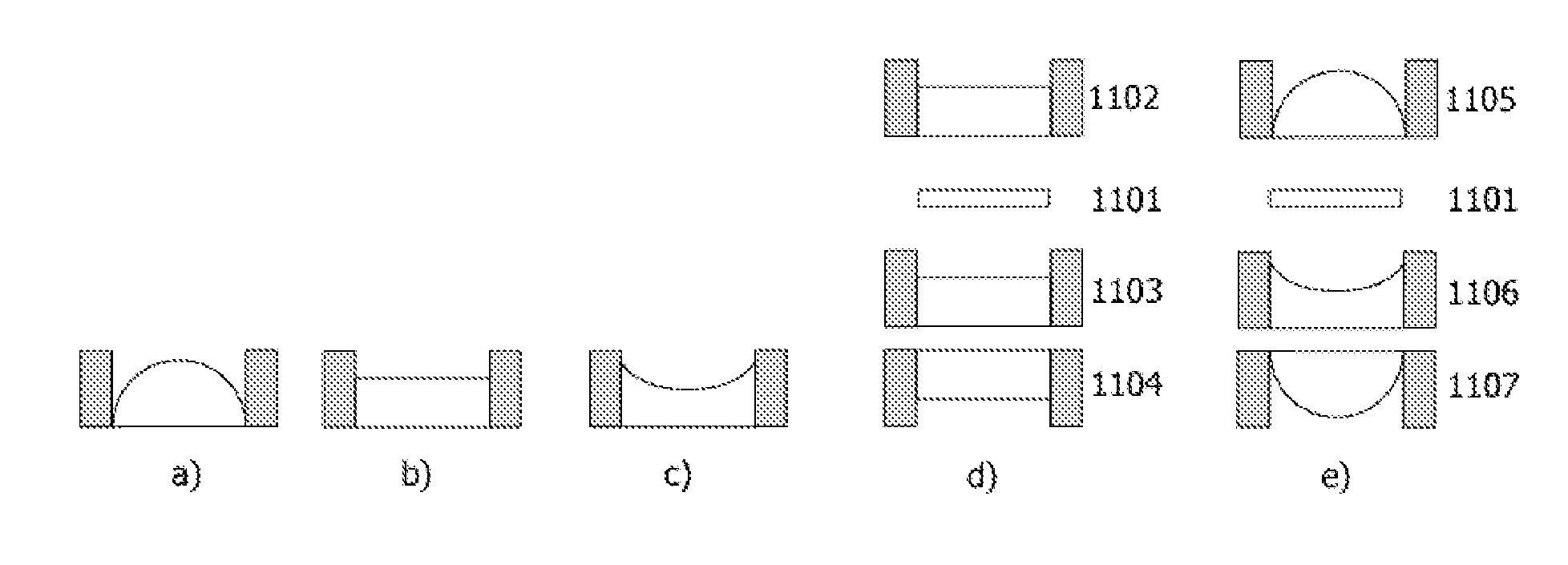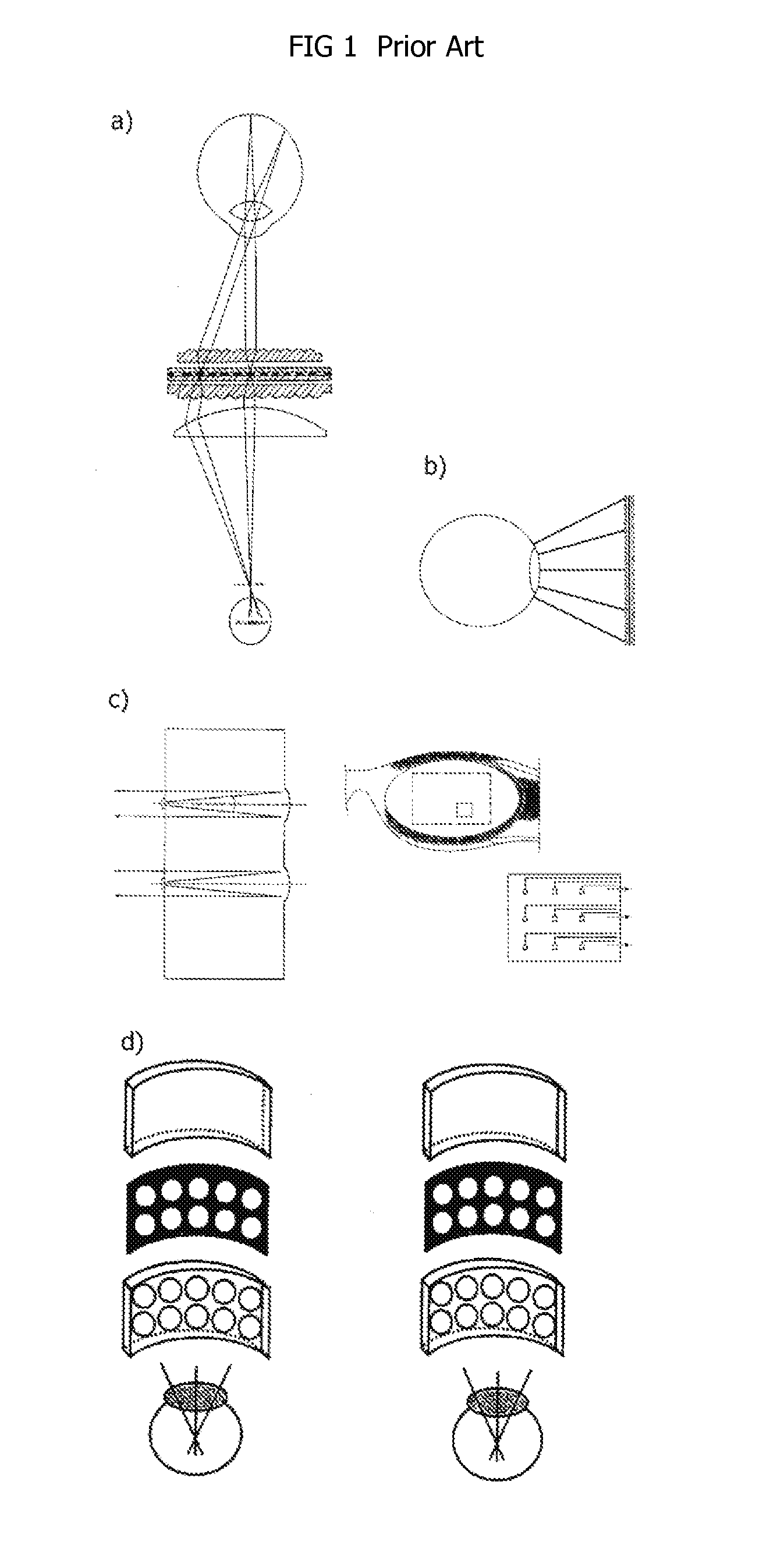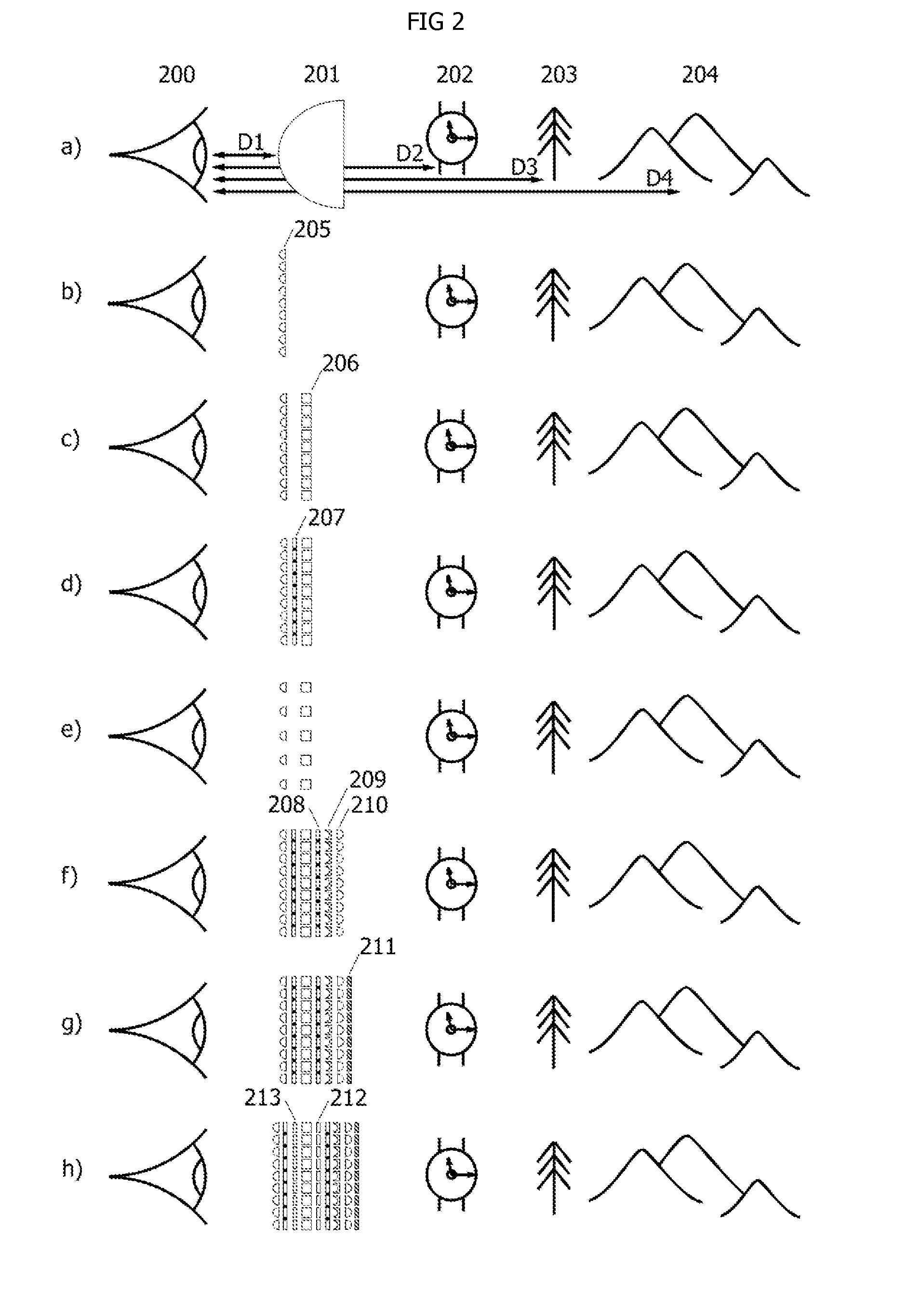Wearable display devices
a display device and wearable technology, applied in the field of wearable display devices, can solve the problems of large and heavy complete systems, reduced display screen image resolution, and insufficient high resolution screen image suited to full motion video, and achieve the effect of not affecting the quality of full motion video
- Summary
- Abstract
- Description
- Claims
- Application Information
AI Technical Summary
Benefits of technology
Problems solved by technology
Method used
Image
Examples
Embodiment Construction
:
[0034]As a means of introduction to the subject of wearable display devices, FIG. 2(a) illustrates a typical bulk convex lens optic 201 placed at a close distance D1 to the eye 200 for purposes of correcting far-sightedness so that an object such as a wrist watch 202 near to the eye at a distance D2 can be focused correctly to the eye. For near-sightedness, convex lens 201 would be replaced with a concave lens so that objects such as mountains 204 far from the eye at a distance D4 can be focused correctly to the eye. A tree 203 at a middle distance D3 may or may not require any corrective lens 201 for proper focusing. If a convex lens 201 is used in a pair of eye glass frames then the convex surface distance D1 may be as close as 0.5 inches from the pupil of the eye 200, the wrist watch 202 may be at a distance D2 of 2 feet, the tree 203 may be at a distance D3 of 10 feet to 100 feet, and the mountains 204 may be at a distance D4 of 1,000 feet to 10,000 feet. FIG. 2(b) illustrates ...
PUM
 Login to View More
Login to View More Abstract
Description
Claims
Application Information
 Login to View More
Login to View More - R&D
- Intellectual Property
- Life Sciences
- Materials
- Tech Scout
- Unparalleled Data Quality
- Higher Quality Content
- 60% Fewer Hallucinations
Browse by: Latest US Patents, China's latest patents, Technical Efficacy Thesaurus, Application Domain, Technology Topic, Popular Technical Reports.
© 2025 PatSnap. All rights reserved.Legal|Privacy policy|Modern Slavery Act Transparency Statement|Sitemap|About US| Contact US: help@patsnap.com



